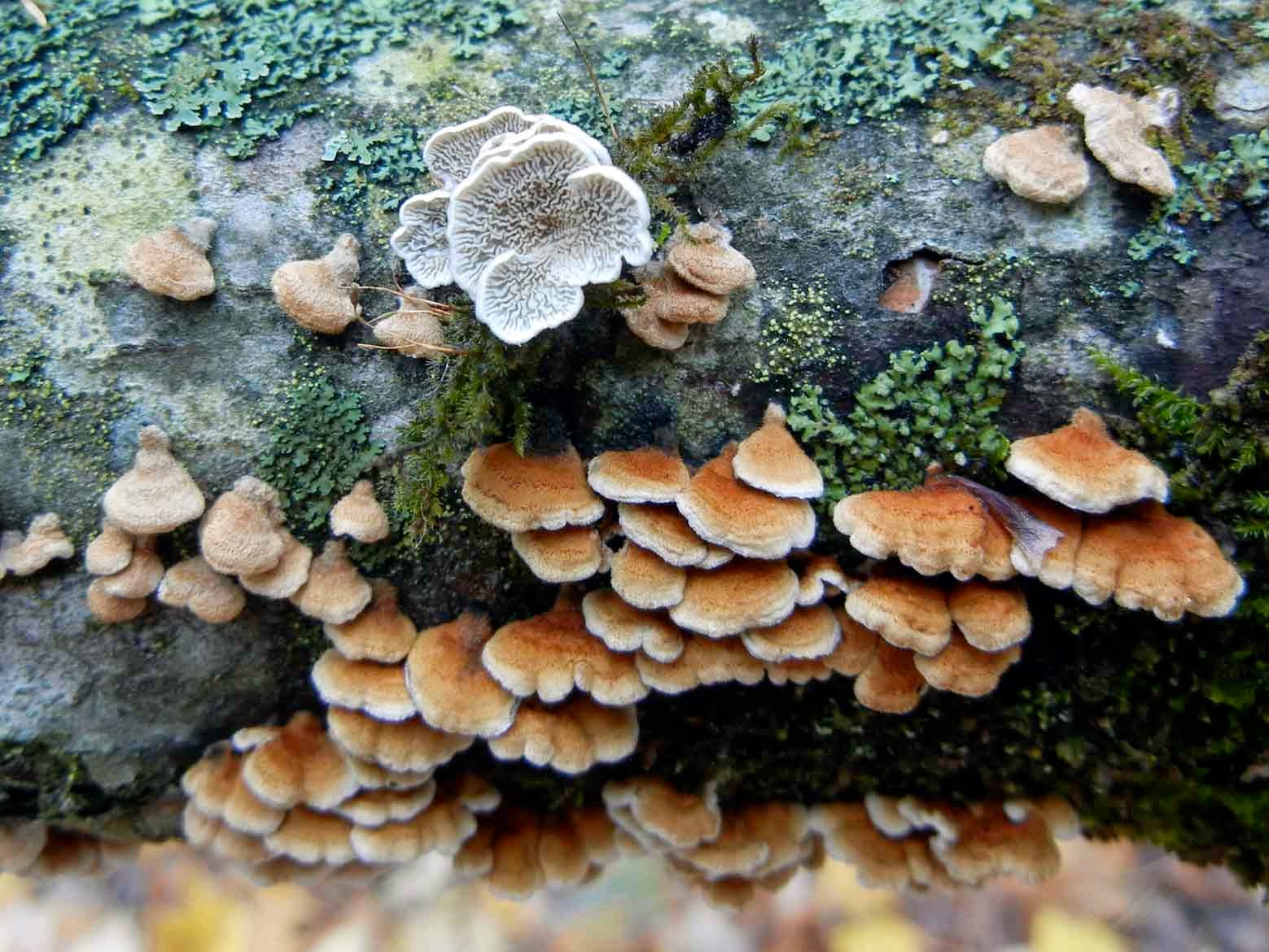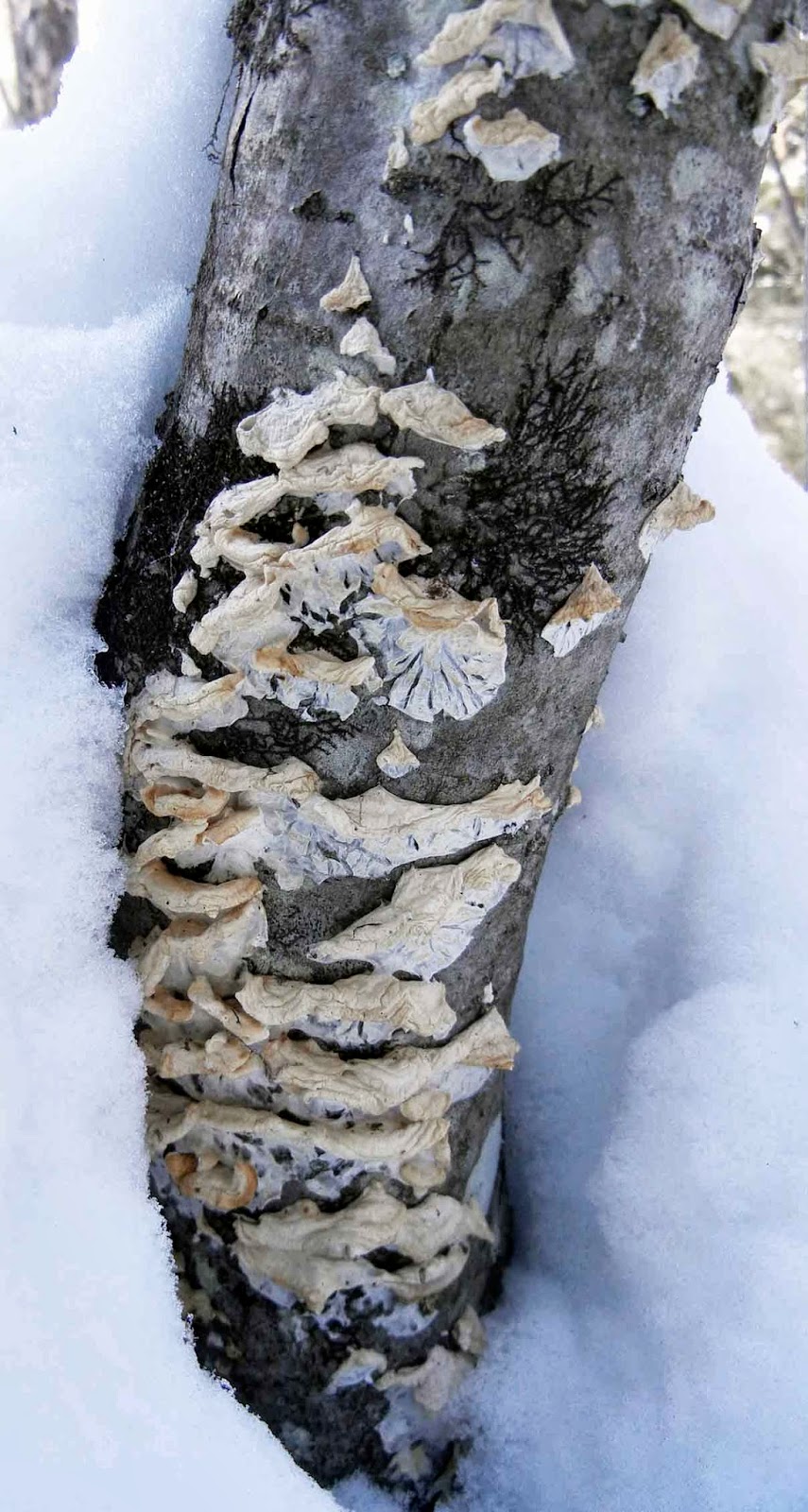 |
| The gill-like folds of Plicaturopsis crispa often have a green tinge. |
Plicaturopsis crispa is a sweet little sessile mushroom that often grows in large, overlapping numbers on dead deciduous trees. The species part of its name, "crispa," comes from the Latin word for "curly" and refers to the wiggly, often forked, spore-bearing folds on its underside. I've found these little guys many times in late summer and early fall on forest trees. It was only when I started mushrooming in the dead of winter that I started finding them down by the creek on dead alders.
| Though tiny and shrivelled in the winter, Plicaturopsis crispa will produce spores if reconstituted indoors. |
But wait! Not only did I find Plicaturopsis crispa, I also found her sister, Plicatura nivea, which I've been looking for for years with no success, and which, because I hadn't found it, I'd decided was terribly rare in my neighbourhood. Well, it's not.
 |
| Plicatura nivea is an unimpressive mess in cold weather. |
First I'll have to admit that I've avoided looking for anything on those wetland alders for more than twenty years because a) the hip-waders I bought at a lawn sale way back when only lasted one season, and b) there are a whole lot of bloodsuckers swimming around in the water those alders stand in. So that's my excuse for not knowing that all I needed to do to find Plicatura nivea was to wade into the alder swamp in the late fall where I would have found plenty of fresh ones since there certainly are an awful lot of frozen ones in there now.
 |
| This reconstituted Plicatura nivea has less defined, more serpentine folds than Plicaturopsis crispa. |
| Close-up of Plicaturopsis crispa. |
Plicaturopsis crispa and Plicatura nivea, which are both wood decaying saprobes, are similar enough both genetically and morphologically that many now think they should share the genus Plicatura.
 |
| Plicaturopsis crispa and Plicatura nivea are so closely related, they sometimes grow together. |
I have found alot of P. Crispa around wherw I live ( scottish midlands). Do you know if they are edible or have any similar properties to turkey tail?
ReplyDeleteOh and what's the sifference between nivea and crispa?
ReplyDelete